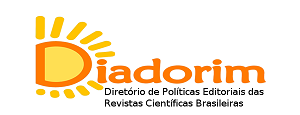GEOGRAPHY AND POETRY
Revisiting the space and history of the old Curralinho through the steps of the poet Castro Alves
DOI:
https://doi.org/10.20873/rtg.v9n18p113-129Keywords:
Poetry. Castro Alves. Curralinho. Lived Space. LandscapeAbstract
In this work, we present an analysis carried out at the interface between the discursive fields of Literature and Geography, in the light of the literary production of the Bahian poet Castro Alves, born in the region of Bahia's recôncavo. We aim to examine some of his poetry to revisit the geographical space of the old village of Curralinho, located in the Recôncavo Bahia, currently the city of Castro Alves / BA, reflecting on how the poet, in 1870, described such space, as well as observing the spatial changes that occurred since then. For this purpose, we chose to use excerpts from three poems written at that time, confronting with current images captured from the place, apprehending and demonstrating the landscape in different spaces of time and reflecting on historical-spatial transformations that have occurred until today. Such transformations were evidenced with respect to environmental degradation processes illustrated in the devastation of the forests in the region; increase and accumulation of garbage resulting from population growth and consumerism, as well as other consequences of agricultural activity, today, prevalent in the region. The approach chosen here contributed to demonstrate a methodological possibility of investigating geographic phenomena based on an interdisciplinary study perspective, taking into account the potential for analysis existing in the Geography / Literature link. Therefore, the initiative of this work points to an additional path in the exploration of new theoretical and methodological approaches for teaching Geography at the fundamental, middle and higher levels.
References
AB’SABER, Aziz Nacib. O que é ser geógrafo: memórias profissionais de Aziz Ab’Saber – em depoimento a Cynara Menezes – Rio de Janeiro: Record, 2007.
CALLAI, Helena Copetti. Estudar o lugar para compreender o mundo. IN: CASTROGIOVANNI, Antonio Carlos (Org.). Ensino de Geografia: práticas e textualizações no cotidiano. Porto Alegre: Mediação, 2009, p. 83 -134.
COUTINHO, Afrânio. Introdução à literatura no Brasil. 3. ed. Rio de Janeiro: Livraria São José, 1966.
IBGE. Atlas das representações literárias de regiões brasileiras / Coordenação de Geografia. - Rio de Janeiro: IBGE, 2006.
IBGE. Evolução da População de Castro Alves/BA. Censo Demográfico 2010. Disponível: http://cidades.ibge.gov.br/painel/populacao.php?lang=&codmun=290730&search=bahia|castro- alves|infograficos:-evolucao-populacional-e-piramide-etaria. Acesso em: 10 Fev. 2020.
MARANDOLA JR., Eduardo. OLIVEIRA, Lívia de. Geograficidade e espacialidade na literatura. REV. GEOGRAFIA, Rio Claro, v. 34, n. 3, p. 487-508, set./dez. 2009.
MARANDOLA Jr, Eduardo. GRATÃO, Lúcia Helena Batista (Orgs.). Geografia e literatura: ensaios sobre geograficidade, poética e imaginação. Londrina: EDUEL, 2010.
MARTINEZ, César Augusto Ferrari. Curricularizando os espaços entre a escola e a cidade. In: CASTROGIOVANNI, Antonio Carlos. TONINI, Ivaine Maria. KAERCHER, Nestor André. (Orgs.). Movimentos no ensinar geografia. Porto Alegre: Imprensa Livre: Compasso Lugar-Cultura, 2013, p. 95- 111.
MORAES, Maristela Maria de. CALLAI, Helena Copetti. Literatura e Geografia em uma proposta interdisciplinar. IN: PORTUGAL, Jussara Fraga. OLIVEIRA. Simone Santos de. PEREIRA, Tânia Regina Dias Silva (Orgs.) (Geo)grafias e Linguagens: concepções, pesquisas e experiências formativas. Curitiba: Editora CRV, 2013, p. 133-152.
TUAN, Yi-Fu. Espaço e Lugar: a perspectiva da experiência. Tradução de Lívia de Oliveira. São Paulo: Difel, 1983.
Published
How to Cite
Issue
Section
License
Revista Tocantinense de Geografia does not remunerate any author for the publication of their texts. The contents of the texts published in this journal are the responsibility of the authors.








.png)












